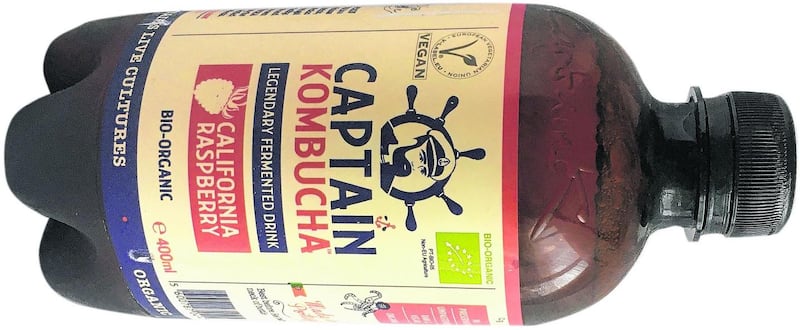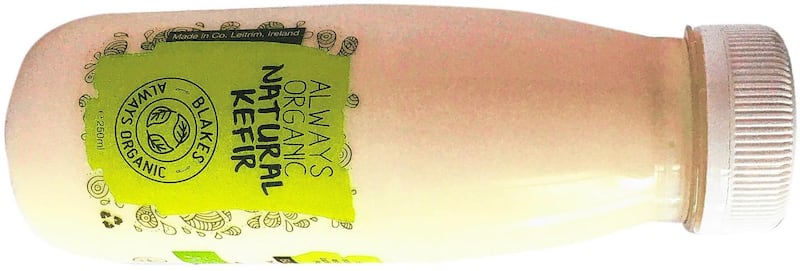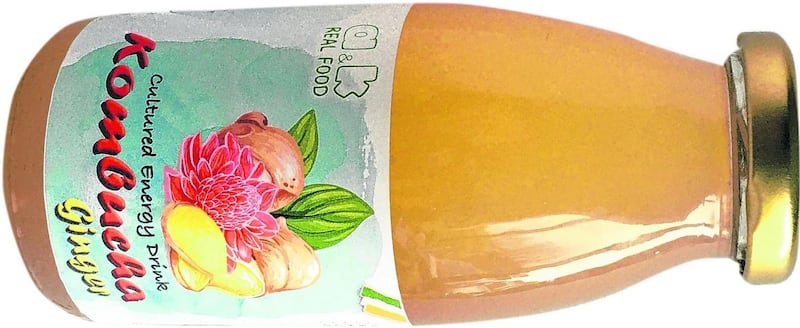While kefir might seem a modern obsession of clean-eaters, it has been around for at least 3,500 years, according to Holly Davis, writing in her excellent book Ferment. Every generation seems to rediscover it.
Milk kefir, water kefir and kombucha are all made using a scoby – a symbiotic community of bacteria and yeasts – which, given the correct culturing medium, environmental conditions and time, produce a fermented drink.
It is argued that they are full of various healthy pre- and probiotics, as well as vitamins and all sorts of other beneficial nutrients. More importantly, they taste delicious and are virtually alcohol-free (kefir and kombucha can actually contain between 0.5 per cent and 3 per cent alcohol, depending on how they are made. Most commercial versions contain less than 0.5 per cent and can therefore be labelled non-alcoholic.

To make milk kefir, you need to get hold of some kefir grains – small, rubbery lumps that look a little like cauliflower. Milk kefir is simply milk that has been left to ferment with grains at room temperature for 24 hours or so. It is an acidic, sometimes creamy, occasionally lightly fizzy drink, not unlike a runny yogurt. The grains need to be fed regular doses of fresh milk, but otherwise the procedure is fairly simple.
Scobys can be bought in health shops, online, or from the burgeoning online fermentation community
Water kefir is made by fermenting water kefir grains (small glassy globules), water, fruit and sugar together for two to four days. It is generally refreshing, and mildly fizzy. You can ferment it a second time with various fruits, berries, spices and herbs to create an effervescent and very enjoyable complex drink.
To create kombucha, you add the starter culture to sweetened green or black tea. A kombucha scoby is a strange sight: a large, floppy, rubbery, jellyfish-like object that grows to cover the surface of your fermenting brew. As with water kefir, you can add flavours and ferment a second time.
Kombucha is made from tea, so it will contain caffeine. Some commercial drinks producers add sugar or stevia to make them taste sweeter. Commercial water kefir is not easy to come by. The best I have tasted was from Ballymaloe Cookery School (a hive of bacterial activity); it is available from the shop there. There are plenty of other drinks to try out too, such as kvass and ginger bug.
You can, of course, buy ready-made kefir and kombucha in many shops, but making your own at home is fun, costs much less and allows you to experiment with flavours. Scobys can be bought in health shops, online, or from the burgeoning online fermentation community. Once you get started, so long as you keep your scoby alive, you can simply reuse your own grains time after time.

Captain Kombucha California Raspberry (organic, vegan)
€2.75-€3.75 for 400ml
I'm not quite sure why we need to import kombucha from Portugal and raspberries from California, but this was a refreshing, fruit-filled kombucha. It was certainly the sweetest of those I tasted, but pleasant nevertheless.
From Health-food shops and SuperValu

SynerChi Raw Organic Live Ginger & Lemongrass Kombucha (organic, vegan)
€2.95-€3.10 for 330ml
Made in Co Donegal, this was a mild, refreshing kombucha, with light citrus and a subtle kick of ginger. A very attractive drink that would please those new to kombucha.
From Health-food shops and SuperValu

Blakes Always Organic Natural Kefir
€2.80 for 250ml
An organic milk kefir made in Co Leitrim. This was smooth and creamy with a good kick of acidity, and a lightly cheesy note. A great way to start the day.
From Health-food shops

A&K Real Food Ginger Kombucha
€2.95 for 330ml
Made in Co Wicklow, this was my favourite kombucha, fizzy, fresh and tangy, with a full-on spicy gingery kick. Highly recommended.
From Health-food shops



















